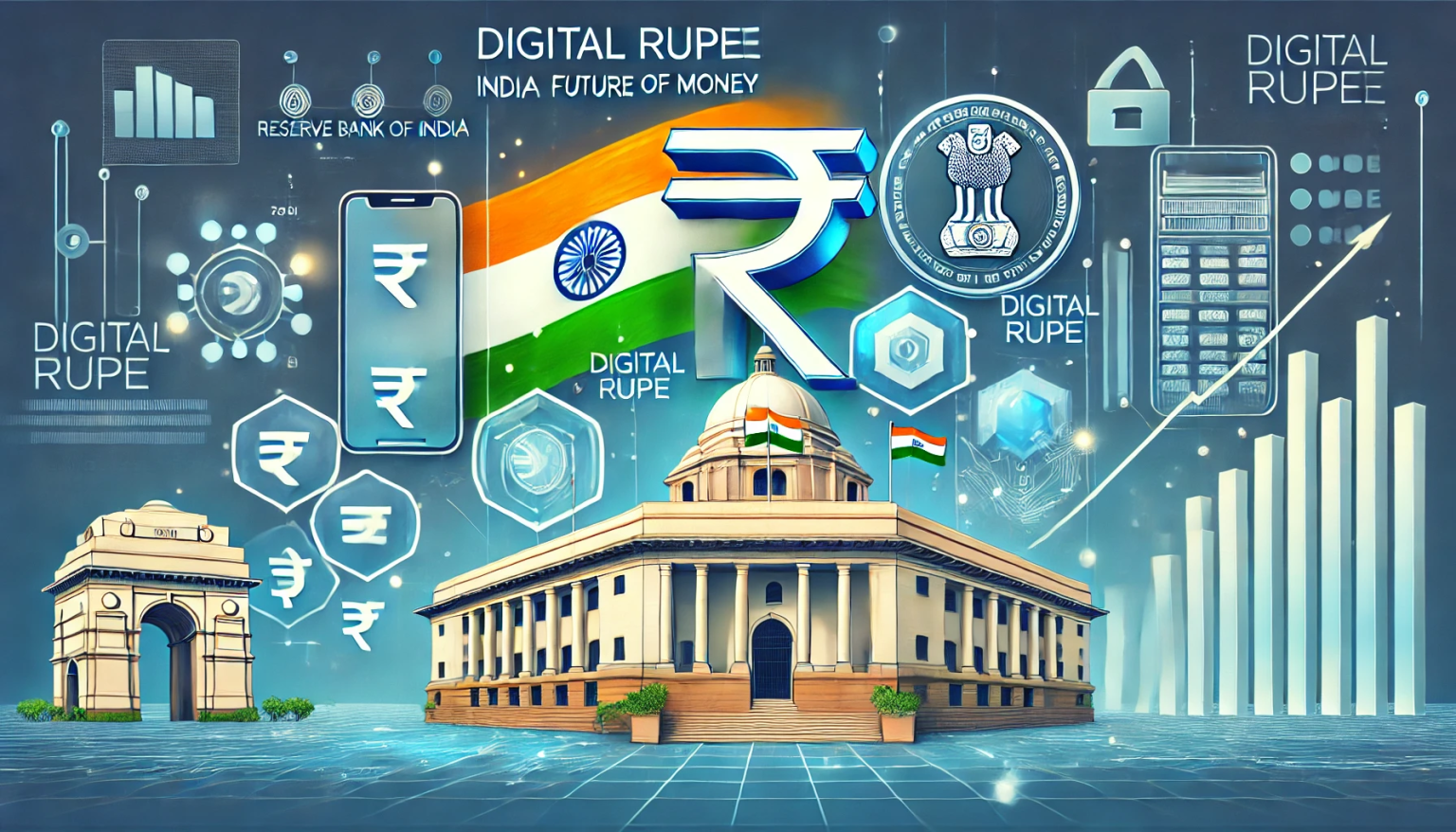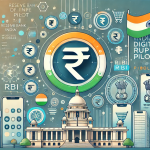Introduction
India is experimenting with its own Central Bank Digital Currency (CBDC) called the Digital Rupee.
Launched by the Reserve Bank of India (RBI), the pilot aims to explore how digital currency can enhance the country’s payment systems.
The Digital Rupee could reshape how Indians transact, save, and interact with money.
What Is the Digital Rupee?
The Digital Rupee is a virtual form of India’s official currency (INR) issued by the RBI.
Unlike cryptocurrencies, it is regulated, centralized, and holds the same value as physical cash.
The goal is to combine the efficiency of digital transactions with the safety of government-backed currency.
Why India Is Exploring a Digital Currency
India’s fast-growing digital economy needs modern, efficient payment solutions.
The Digital Rupee can reduce the cost of cash handling, improve transaction speed, and fight counterfeiting.
It also supports financial inclusion, making banking services accessible to more people.
Features of the Digital Rupee Pilot
The pilot includes limited rollout in select cities and sectors, involving banks and payment providers.
Transactions are tested for retail use (person-to-person and person-to-merchant) and wholesale use (between banks and institutions).
The focus is on testing interoperability with existing systems like UPI and banking apps.
How the Digital Rupee Works
Users can store Digital Rupee in mobile wallets or bank apps, like existing e-wallets.
They can use it to pay at stores, online merchants, or for peer-to-peer transfers.
Transactions are instant, secure, and recorded by RBI’s backend systems.
Benefits of the Digital Rupee for India
It makes payments faster and cheaper, especially for cross-border transactions.
It helps reduce reliance on physical cash, cutting costs for the government.
Digital Rupee can also enhance transparency in financial transactions, curbing black money.
Impact on Indian Banks and Payment Systems
Banks may need to upgrade systems to support CBDC transactions.
Payment apps and wallets like Paytm, PhonePe, and Google Pay might integrate Digital Rupee for broader reach.
The currency could coexist with UPI, offering an additional option for digital payments.
Challenges and Concerns with Digital Rupee
Privacy concerns exist about government tracking of transactions.
Technical challenges include ensuring system security, avoiding cyber threats, and preventing misuse.
Adoption may be slow if users don’t see clear benefits over existing digital options.
Comparison with Other Countries’ CBDCs
India joins countries like China (Digital Yuan), Sweden (e-Krona), and Nigeria (eNaira) in launching digital currencies.
Each country has different goals, but all aim to modernize payments and improve monetary policy control.
India’s Digital Rupee focuses on retail adoption and cross-border trade benefits.
Role of RBI and Indian Government
The RBI oversees design, issuance, and security of the Digital Rupee.
The government supports it as part of India’s digital transformation and financial inclusion strategy.
Both aim to ensure smooth integration with the current financial ecosystem.
Future Prospects of the Digital Rupee
If successful, the Digital Rupee could become widely available for public and business use.
It may reduce demand for cash and streamline government payments and subsidies.
Over time, it could become a key tool for monetary policy and financial innovation.
Impact on Cryptocurrency in India
The Digital Rupee shows India’s preference for government-backed digital assets over private cryptocurrencies.
It may coexist with regulated crypto markets, but unregulated private coins could face tighter restrictions.
CBDC adoption may shift focus away from crypto trading toward mainstream digital finance.
What Experts Are Saying
Economists believe the Digital Rupee can revolutionize payments if rolled out efficiently.
Fintech experts highlight the need for strong security and user privacy protections.
Some warn about possible competition with banks and wallets, needing careful coordination.
Conclusion
India’s Digital Rupee pilot is a historic step toward the future of money.
With benefits like faster payments, reduced cash dependence, and enhanced transparency, it holds great potential.
However, challenges around privacy, adoption, and regulation must be addressed to make it a success.









